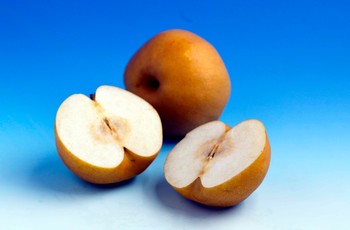How to Plant Apple Seeds
Apple orchards are a classic addition to a scenic homestead. Even when you don’t want to add a whole row of apple trees to your property, planting apple trees is an American tradition which goes all the way back to the legends as the story of Johnny Appleseed, who roamed the American Midwest in the early 19th century, planting apple seeds.
Start a tradition of your own by learning how to plant apple seeds around your place. Planting apple seeds might not be as practical as growing other types of crops, since growing an entire apple tree takes years. But if you plan on living somewhere for a long time, planting a row of trees allows you to beautify your home and produce juicy apples for generations.
The fruits yielded by such an apple tree are often worth the wait, since the apple is one of the most popular fruits. Planting apple seeds can be a special activity for young growers to relish, since the kid should be able to watch a lasting landmark they planted grow with the years. Decades later, they’ll remember the time the family planted that tree.
Mature Apple Trees
A grown apple tree has several benefits. You can harvest apples for yourself yearly, but also gather them as gifts for your friends and families. Unused apples from your orchard are consumed by local animals and people, contributing to a sustainable and ecologically-friendly environment.
Learn everything you need to know in order to plant apple seeds by readign the apple seed planting tips below. We offer preparatory information regarding apple seed planting and growing, as well as the tools and materials to plant your apple seeds. Then we’ll discuss the actual planting of apple seeds and give advice on the care and maintenance of your future apple tree.
Getting Started With Apple Seeds
Apple seeds are available in most commercial agricultural stores and plant nurseries. First, consider planting your apple tree from a seed or from a sapling. Seeds are easy to get, since even the apple fruit you buy at the store contains the seeds necessary to grow new plants.
Apple trees can take a long time to grow to maturity, though, leaving you wanting apples for quite some time in the interim.
A quicker way of growing an apple tree is from a sapling. Go to a local plant nursery to investigate their specimens. Ask the salesman questions about growing apple trees in your climate, if you decide to grow your tree in this way.
Luck for you, apple trees are resilient and grow in a variety of environments, ranging from areas across the United States of America.
To complete your project, you’ll need these apple planting tools.
- Spade
- Fertilizer
- Sapling/Seeds
- Watering Can
- Soil
Planting Apple Seeds

How to Plant Apple Seeds
Mastering how to plant apple seeds isn’t complicated and can be broken down into a few easy steps.
First, till the soil that you intend to plant in. Either choose the soil of your outdoor garden or the soil in your yard. Almost anywhere you decide to plant an apple tree is potentially suitable, with the right amount of care and fertilizer.
Remove any weeds or other invasive organisms from the area. Invasive pests harm your plant and prevent it from growing into a healthy tree by leeching its minerals and food or water supply.
Soil Enrichment
Add some soil enrichment to your desired planting spot. Soil enrichment options include commercial fertilizer, manure and compost. Give the soil the minerals and nutrients it needs to nurture and sustain life, by mixing the soil enrichment material in with the regular soil.
Dig a small hole and put your seeds in the hole. You won’t need to dig deep. Digging a few inches into the ground of the area you tilled and fertilized should do the trick. Cover the seeds with a mixture of soil and fertilizer and water lightly.
If you plant an apple tree sapling near your home, follow the preceding steps in the same way. The only difference between a sapling and a seed is that you need small root structure already. Dig a couple feet into the ground. rather than a couple of inches.
Upkeep of the your apple tree should be similar, regardless of its stage in the life cycle. Make sure your plant is getting about 1-2 inches of water per week. Too little water kills the plant, but too much water is just as bad.
Remember, one of the most important parts of learning how to plant apple seeds is to remember to keep the surrounding area devoid of weeds. Look for signs of pests or invasive creatures on your developing tree. If your plant has chewed leaves or marks on the trunk, you need a pest-killing product.
Find an natural alternative, to keep your potential tree alive and healthy. Depending on what you started with – seeds or sapling – you’ll grow a sizable tree in just a couple of seasons.
